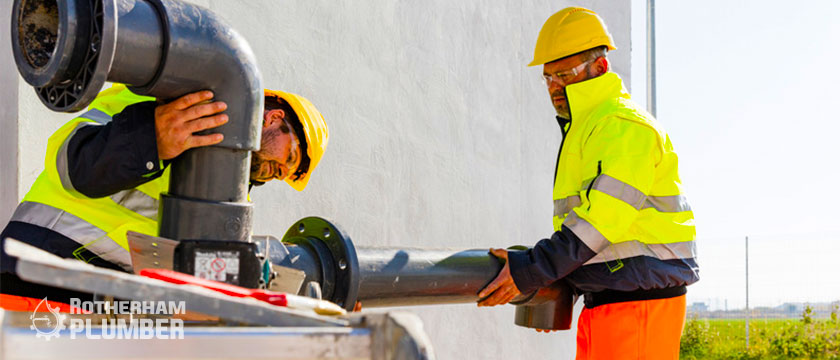
11 Dec. 21
How to Unclog Bathroom, Kitchen and Toilet Drain?
Whether it’s hair in the tub or food in the kitchen sink, no one likes dealing with a clogged sink. However, clearing a blockage doesn’t have to be difficult. Bathroom, Kitchen, and Toilet Unclog Methods Oftentimes, you can clear a blockage that is nothing but a pump. Some blockages can be stubborn and require the use of a drain wire. In rare cases, you may need to completely remove the siphon and all connections and clean the pipes. You can also try chemical and natural lighteners, but you should never mix more than one chemical lightener at once.
How to Clean Kitchen Drain Pipe?
If you’re in the kitchen, check the garbage disposal. Before you pump a kitchen sink, check for clogs in the garbage disposal; if it’s not draining on that side, it’s a grinder problem. Run it first to see if it cleans the inside, but you may need to remove the garbage disposal and manually turn the blades to clean it.
To manually rotate the blades, make sure the grinder is unplugged, then place a hex key under the grinder. Turn clockwise to help the blades move.
If you have a dishwasher, clamp the drain hose right next to the disposal. It is a flexible hose, so the clamp prevents gross water from entering the dishwasher
how to open a clogged sink
Place the pump on the drain. Make sure that the nozzle of the pump completely covers the hole. This part of the pump should be in contact with the basin around the siphon.
In a sink or tub, you can rub the rim of the pump with dishwashing gel to get a better seal.
You probably want to keep a dedicated pump for the sewers and a separate pump for the toilets. In the toilet, be sure to cover the hole in the bottom of the bowl when dipping.
Do not use a pump immediately after using chemical openers. If chemicals splash on your skin, you can cause severe burns.
Unclogging a clogged kitchen sink
If you are unclogging a sink, remove the siphon for standing water. Wear rubber gloves for this procedure. If you have standing water in the sink, start with a glass and bucket with ladle. To locate the blockage, look under the sink for a curved pipe connected to the drain. Place a bucket or pan under the siphon to collect the escaping water.
To remove the siphon, use a set of pliers to remove the slip nuts connecting the pipes. If your pipes are plastic, be careful not to use them. If the pipes are metal, the slip nuts may be difficult to remove. Remove the slip nut between the siphon and its parts, the pipe leading to the wall first. Then take the siphon and pull it out of the other pipes.
Unclogging a clogged bathroom sink
If you have a drain, clear any clogs in the siphon. If your siphon is clogged, pull the clog out with your gloved fingers. Check the other parts as well. And see if it’s blocked. If there is, clear this blockage as well. Rinse the siphon with water and reinstall it.
If the siphon is not the source of the blockage, leave it closed to access the drain.
Now is a good time to replace these joints or pipes if they appear thin or broken. You will be out of trouble in the future.
Unclogging a clogged bathroom sink
What kind of wire will you open the blockage with? Turn the set screw to the left at the end of the wire so you can feed the end. Take the end of the wire and pull it out about 15 cm (0.5 feet). Push the end of the wire into the drain.
With a sink, you can run the wire into the drain stud, which is an open pipe in the back wall under the sink.
In a tub, remove the overflow plate, which is the hole between the drain and the faucet.
In the shower, remove the drain caps and run them down the drain.
Send the wire until it is forced into the drain. Use the hand lever on the back of the spool to feed the wire. You finally feel like you’ve stopped, which means you’ve hit the bottleneck. Feed the wire until you feel the end of the wire just push the clog. When this occurs, the voltage in the wire will drop.
The wire will turn corners (elbows) as needed.
You can get help from our Drain Unblocking Rotherham team, any hour of any day.
How to open a clogged kitchen
Repeat this process until you no longer feel a blockage. Continue forcing the wire and pulling out the clog until it no longer hits the clogs. When you are sure the clog is gone, plug the siphon back in and rinse with warm water to remove any excess debris.
You can also wash the sink using baking soda and vinegar to deodorize the sink strainer and any remaining buildup. Pour 0.5 cups (90 g) of baking soda into the strainer, followed by 0.5 cups (120 ml) of white vinegar. Plug both drains into the drain (or if you’re working in a 2-drain kitchen sink) and wait a few minutes to rinse with warm water.


